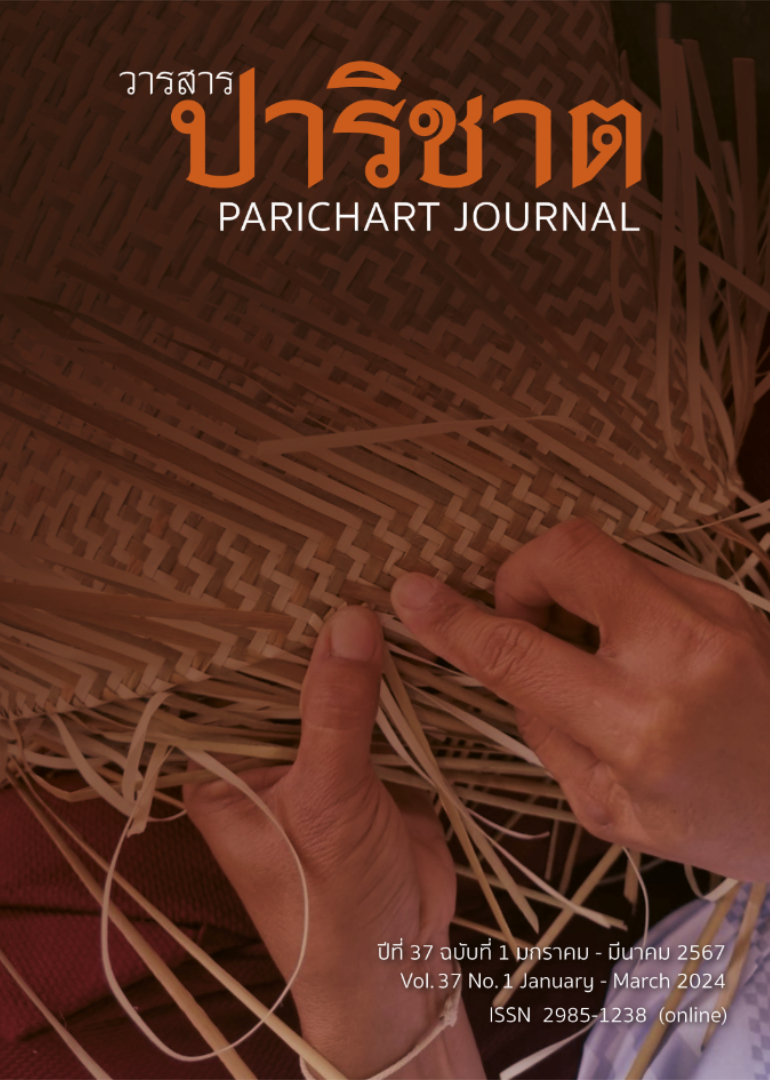สมรรถนะระหว่างวัฒนธรรมของสามเณรนักเรียนกลุ่มชาติพันธุ์ ในโรงเรียนพระปริยัติธรรม
Main Article Content
บทคัดย่อ
การศึกษาครั้งนี้มีวัตถุประสงค์ เพื่อศึกษาและเปรียบเทียบสมรรถนะระหว่างวัฒนธรรม ประกอบด้วยทัศนคติระหว่างวัฒนธรรม ความรู้ระหว่างวัฒนธรรม ทักษะระหว่างวัฒนธรรม และพฤติกรรมการสื่อสารระหว่างวัฒนธรรมของสามเณรนักเรียนโรงเรียนพระปริยัติธรรม แผนกสามัญศึกษา จังหวัดพะเยา ที่มีความแตกต่างทางกลุ่มชาติพันธุ์ ระดับการศึกษาและระดับประโยคนักธรรม ใช้ระเบียบวิธีวิจัยเชิงปริมาณ โดยอาศัยโมเดลของเดียร์ดอฟฟ์เป็นกรอบการวิจัย เก็บข้อมูลจากสามเณรนักเรียนโรงเรียนพระปริยัติธรรม แผนกสามัญศึกษา จังหวัดพะเยา ทั้งหมดปีการศึกษา 2564 จาก 4 โรงเรียน จำนวน 397 รูป ใช้แบบสอบถามเป็นเครื่องมือในการวิจัย สถิติที่ใช้ในการวิเคราะห์ข้อมูล ได้แก่ ความถี่ ร้อยละ ค่าเฉลี่ย ส่วนเบี่ยงเบนมาตรฐาน สถิติ t-test และสถิติ ANOVA ผลการวิจัยชี้ให้เห็นว่า สามเณรนักเรียนมีสมรรถนะระหว่างวัฒนธรรมในภาพรวมอยู่ในระดับสูง (= 3.47) ซึ่งประกอบไปด้วยพฤติกรรมการสื่อสารระหว่างวัฒนธรรม (
= 3.63) และทัศนคติระหว่างวัฒนธรรม (
= 3.52) อยู่ในระดับสูง แต่มีความรู้ระหว่างวัฒนธรรม (
= 3.39)และทักษะระหว่างวัฒนธรรม (
= 3.35) อยู่ในระดับปานกลาง ผลการทดสอบสมมติฐานพบว่า (1) สามเณรนักเรียนกลุ่มตัวอย่างที่มีกลุ่มชาติพันธุ์ต่างกัน ไม่มีสมรรถนะระหว่างวัฒนธรรมในทุกด้านต่างกัน (2) สามเณรนักเรียนกลุ่มตัวอย่างที่มีระดับการศึกษาต่างกัน มีสมรรถนะระหว่างวัฒนธรรมด้านพฤติกรรมการสื่อสารระหว่างวัฒนธรรมต่างกันและ (3) สามเณรนักเรียนกลุ่มตัวอย่างที่มีระดับประโยคนักธรรมต่างกัน มีสมรรถนะระหว่างวัฒนธรรมในทุกด้านแตกต่างกัน อย่างมีนัยสำคัญทางสถิติที่ระดับ 0.05
Article Details

อนุญาตภายใต้เงื่อนไข Creative Commons Attribution-NonCommercial-NoDerivatives 4.0 International License.
เอกสารอ้างอิง
Ramirez, R. E. (2016). Impact On Intercultural Competence When Studying Abroad and The Moderating Role of Personality. Journal of Teaching in International Business, 27, 88-105. https://doi.org/10.1080/08975930.2016.1208784.
Wolff, F., & Borzikowsky, C. (2018). Intercultural Competence by International Experiences? An Investigation of The Impact of Educational Stays Abroad on Intercultural Competence and Its Facets. Journal of Cross-Cultural Psychology, 49(3), 488-514. https://doi.org/10.1177/0022022118754721.
Opassatian, K., Polsaram, A., & Kaemkate, A. (2020). Development of Intercultural Competency Indicators of Faculty in International Program. Saengtham College Journal, 12(2), 50–67.
Deardorff, D. K. (2015). How to Assess Intercultural Competence. In Zhu Hua (Ed), Research Methods in Intercultural Communication: A Practical Guide, (pp.120-134). Wiley-Blackwell.
Subcommittees for The General Buddhist Education. (2014). Manual for the General Buddhist Education. (1st ed.). National Office of Buddhism Press. https://www.onab.go.th/th/ebook/category/detail/id/1/iid/94. (in Thai)
Committees for the General Buddhist Education. (2015). General Buddhist Educational Curriculum B.E. 2558 (A.D. 2015) According to The Basic Education Core Curriculum B.E. 2551 (A.D.2008), Buddhism and Pali Language Subject Area. (in Thai)
Jandeang, B. (2019). Factors Affecting Drug Risk Behavior of Secondary School Students in The Boundary Area of the Mekong Basin. Journal of Research and Development Institute Rajabhat Maha Sarakham University, 14(3), 424-432. (in Thai)
Kim, Y. Y. (2001). Becoming Intercultural: An Integrative Theory of Communication and Cross-Cultural Adaptation. Sage Publications.


